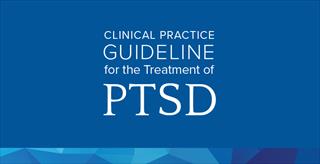



The guideline recommends interventions for the treatment of PTSD in adults. Recommendations are based on a systematic review of the scientific evidence, a weighing of the benefits and harms of interventions, consideration of what is known about patient values and preferences, and consideration of the applicability of the evidence across demographic groups and settings.
Note: In 2021 the APA Board of Directors appointed a multidisciplinary panel to update the 2017 Clinical Practice Guideline for the Treatment of PTSD in Adults. Reports on the panel’s progress and requests for input will be made periodically to the APA Council of Representatives, APA boards and committees, APA members, and the broader public.
See Placing Clinical Practice Guidelines in Context for guidance on use of this guideline.
Decision aid for using the guideline
Casebook to the APA Clinical Practice Guideline for the Treatment of PTSD
This casebook offers detailed guidance to help practitioners understand and implement the treatments recommended in APA’s Clinical Practice Guideline for the Treatment of Posttraumatic Stress Disorder in Adults.
For more information on treating children and adolescents with PTSD, please refer to the following resources:






For Patients and Families
ADVERTISEMENTThe 12-person panel that produced the guideline was composed of researchers and clinicians with backgrounds in psychology, psychiatry, general medicine and social work, as well as a community member. The members of the panel were vetted by the APA Advisory Steering Committee for the Development of Clinical Practice Guidelines and appointed by the APA Board of Directors.
Provision of high quality, effective care that reduces symptoms and helps the patient return to higher levels of functioning is a shared goal for patients and their families, practitioners, policy makers, and administrators. But knowing which information to trust and prioritize is not easy, and synthesizing available research and determining preferable care options can be daunting. Clinical practice guidelines are an essential tool to guide clinical decision-making and make it easier for patients to get the care they need. Clinical practice guidelines are intended to be a central—but clearly not the only—determinant of treatment choice. Other factors include patients’ preferences and histories, providers’ expertise and judgment, nonspecific factors in psychotherapy, and patients’ individual differences.